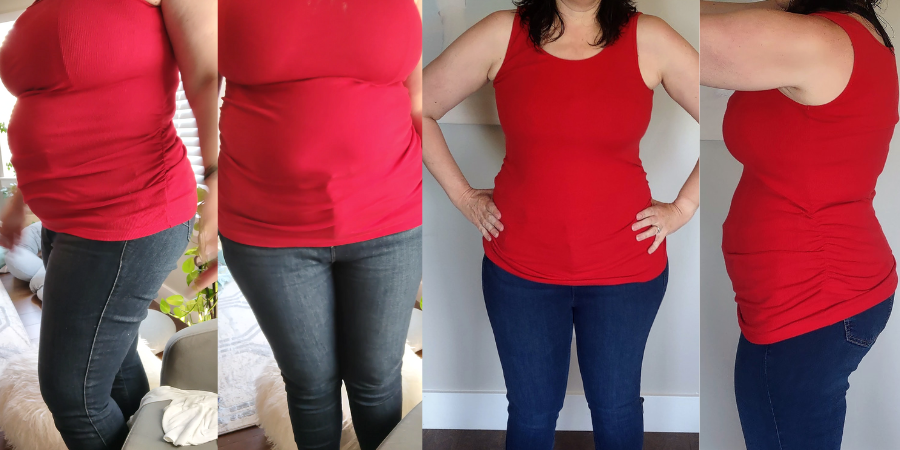June is Lipedema Awareness Month – I’m sharing my story to help raise awareness.
In my previous article, I shared how the Carnivore diet reversed a long list of symptoms I was experiencing and gave me the motivation to want to live again. In this article, I will provide an update on my current Lipedema status and weight loss.
While the Carnivore diet did not cure my Lipedema, as there is currently no cure for the condition, it had a significant impact on my body and helped me lose the normal fat that I couldn’t shed before. It also helped me control the swelling associated with Lipedema. Managing Lipedema involves identifying inflammation triggers, reducing swelling, and addressing normal fat accumulation, all of which the Carnivore diet has helped me achieve.
In 2019, I was diagnosed with Stage 1 Lipedema, specifically type 3 and 4 with the type A shape (gynoid). This was before my second pregnancy and hip replacement; my weight was 185 pounds. After my 2nd baby and hip replacement, my weigh was stuck at 210 pounds, dropping 10 pounds post surgery, starting Carnivore at 200 pounds. I progressed to Stage 2 Lipedema.
My current weight is 179 pounds. The Lipedema progressed after giving birth or the hip replacement, particularly in my arms, stomach, legs, and left hip. However, the Carnivore diet played a significant role in helping me shed the baby weight and even more, the ankle cuff that was slightly visible in 2019 is now completely gone.
It has been six months since I started the Carnivore diet, and I promised to share my results. Unfortunately, I didn’t take any before photos because I had grown accustomed to not seeing any noticeable changes in my body. However, I did manage to capture a few screenshots from a video I had. By comparing these images, you can see the visible difference in how my clothing fits. I have visibly lost inches all over, with the most noticeable change being around my torso. Although the Lipedema pocket in my abdomen is still visible, I have lost the fat around it. It is worth mentioning that Lipedema fat distribution is irregular, and my arms still remain quite large, preventing me from fitting into many of my old clothes. This irregular distribution is a characteristic of Lipedema.
The two photos on the left are BEFORE photos and the two photos on the right are my 6 Months Carnivore Photos. In my after photos, you can see the larger leg on the left (my right), and larger hip on the right (my left). I am wearing a compression bra in the after photo. Prior to Carnivore I wore 16-18 or Size 1 pants. I wore size 1 tops and dresses. I’m now size 14-16 pants. The size of dress and top depends on the cut or style. My arms are still large, so some shirts or dresses I have to size up to fit my arms. I have some Torrid 0 and 00 shirts and dresses that fit, but some are too big. I have some XL shirt that fit and some are now too big. I was in XL leggings, but they are all too loose and no longer offer any compression. I was in a 38 or 40 band size with my bra, but now I’m 34-36 band size. I’m feeling like my old self again.

I achieved these results without engaging in any exercise, just chasing around my toddler. Which astonishes me as I have never experienced such significant changes in my body without heavy exercise. I still face challenges with my mobility due to my hips. I’m unable to walk very far without triggering pain. Hopefully down the road, I can go for walks with my family and walk my kids to school.
I will be restarting physical therapy at a clinic that is more EDS aware, and I plant to get 1 PRP injection the hip that hasn’t been replaced.
In my next article, I will delve deeper into Lipedema and share additional insights and experiences.
NEXT: My Lipedema Story – Part 10 – Oxalates – The Healing Blossom



